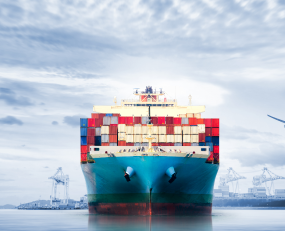
The coronavirus pandemic has wreaked havoc throughout the globe, causing mayhem as it has spread. After five months of respective lockdowns across the world, there are some signs that life is beginning to resemble our pre-coronavirus lives.
The sea freight forwarding market, however, is yet to resemble its pre-coronavirus state. Despite lockdown measures being lifted, there is a sense that we are still living in limbo whilst we wait for coronavirus to pass and the looming recession to take hold. Consumer demand is unlikely to return to pre-crisis levels anytime soon. IHS Markit announced in May that it had downgraded its outlook for international trade volumes in 2020, forecasting a year-on-year decline of 10.1% after predicting a 2.1% increase in February. It is important to note that the recession will not solely impact developing economics, but as highlighted by the IMF’s chief economist, Gita Gopinath, emerging market economies too will enter recession for the first time since the Great Depression. If this is to be the case, then the sea freight market will be severely impacted.
There are some bright spots in the market. It appears that the sea freight market has learnt some lessons from the 2008-09 financial crisis and carriers have been able to avoid a collapse in freight rates by reducing capacity. A fundamental issue for the sea freight market in the past has been a lack of freight rate stability. Blanked sailings enabled shipping lines to maintain a degree of control over capacity and help balance rates.
However, though blank sailings have been effective in managing demand during the pandemic there are likely to be consequences later down the line. Extensive blank sailings caused capacity out of China to tighten, an issue which is likely to become more prominent during the second half of 2020 as some demand returns and the number of blank sailings continues to remain at a high level throughout August. As lockdown is eased, followed by an increase in orders there could be a spike in shipping rates during the second half of the year. This is because capacity in the industry would take time to be brought back online and ready for operation. Containers may once again start stacking up in ports in China.
Additionally, it is all very well and good blanking sailings to help balance capacity and sea freight rates however, idle ships are costly. Shipping lines do not appear to be confident in a sudden boom in demand. Despite a reasonable first quarter, Maersk stated in June that it anticipates global volumes to fall between 15-18% during Q2 2020. If demand continues to be weak, shipping lines may not have many options but to continue to blank sailings.
Following the crisis and a period of looming financial instability, carriers may be forced to reconsider business models and adapt their strategies to ensure some profitability moving forward. Asset ownership in particularly will come under scrutiny. Before the pandemic, Maersk had started to scale back its investments in new ships, instead investing in its vision of becoming an end-to-end global integrator of container logistics. More recently, Maersk Tankers announced that it would be shifting its business model towards managing tanker fleets as opposed to operating its own ships.
The sea freight market over the past five months has been volatile and uncertain. One thing for certain though is that carriers will need to be prepared for the sea freight market to undergo a period of drastic change. Only time will tell how carriers react and whether they choose to follow in Maersk’s footsteps.
Source: Transport Intelligence, June 23, 2020
Author: Beth Poole